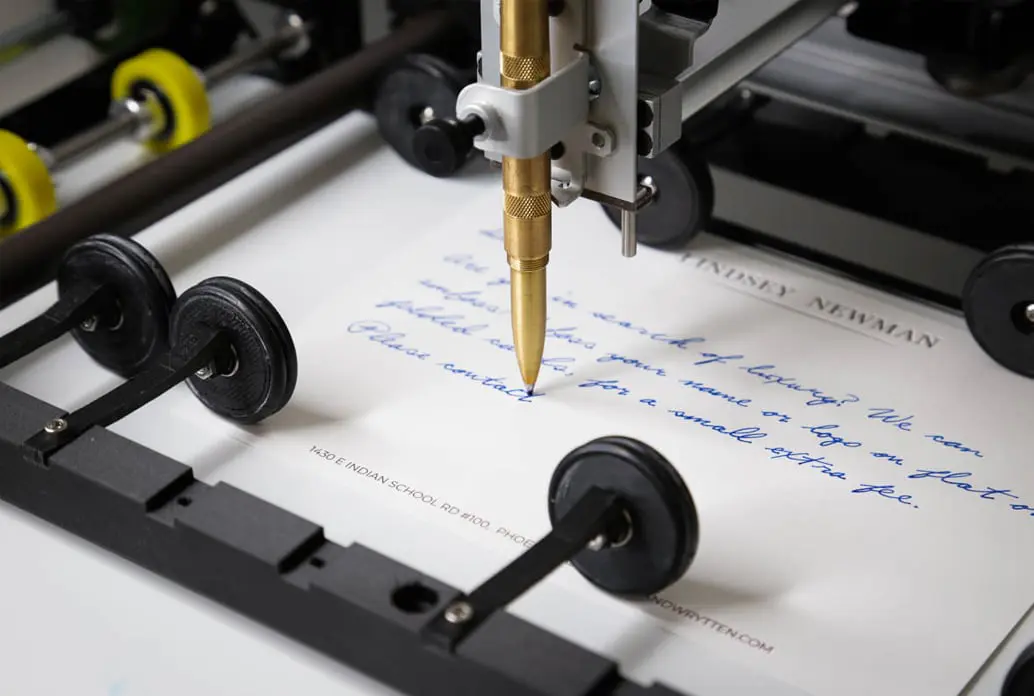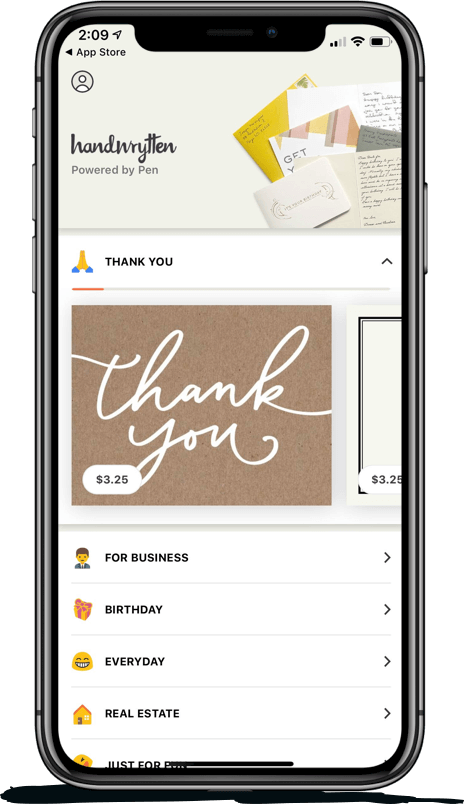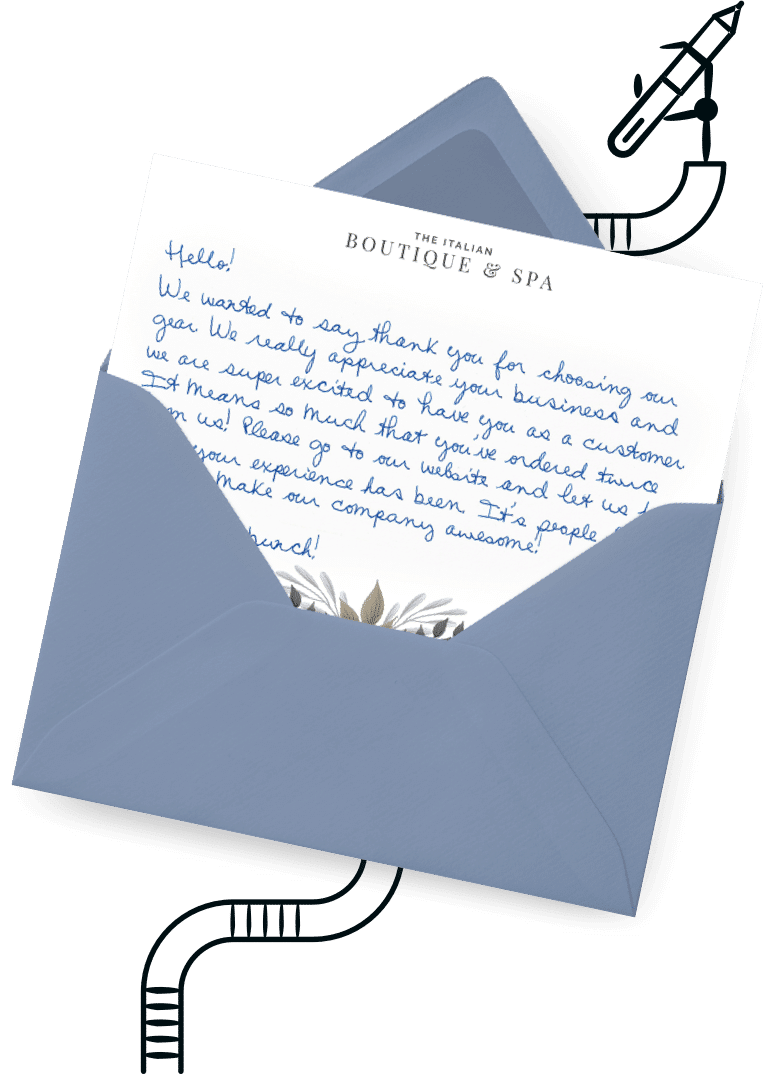
9280 S. Kyrene Rd.
Suite 134
Tempe, AZ 85284
Phone: +1 (888) 284-5197
Email: contact@handwrytten.com



You have been subscribed. Thank you!


Are you looking to improve your customer relationships? If so, you’ve probably heard that personalization is the future of marketing. It’s true, and if you do it right, it can be a game-changer for your business.
Personalization is a powerful tool that marketers use to create strong connections and loyalty with their customers. According to 92% of marketers, customers desire a personalized experience. It makes them feel valued, boosting their trust in your brand, and encourages them to return.
So, let’s get started. Here are 5 simple ways to personalize customer relationships.
Businesses that excel at building relationships with customers end up besting their competitors and seeing higher returns on their marketing efforts. While most leads do not convert, 60% of sales to existing customers are successful. Having strong customer relationships also makes it easier for you to build trust, get referrals, and promote brand loyalty.
Personalized customer experience is a wonderful approach to strengthen existing connections with clients. The easiest way to get started is by uniquely personalizing the client encounter across all channels, especially marketing.
The benefits of personalizing interactions with customers go beyond just improving the relationship. It also helps increase conversions, builds loyalty, and reduce churn rates; all while reducing costs per acquisition (CPA) by as much as 50%.
Best of all – personalized experiences don’t have to be complicated or time consuming. All you need is a little creativity and minimal customer data.
Personalized marketing materials help increase conversions, builds loyalty, and reduce churn rates; all while reducing CPA by as much as 50%.
Now that we’ve covered why your business should utilize personalized marketing materials, here’s 5 simple ways to get started.
A simple way to implement personalization is to use customer data, including transactional and behavioral information, to create a unique user experience. You’ll want to focus your attention on creating an experience that has a high chance of getting them excited about doing business with you again.
So, exactly how would you do this? Here are some best practices for using customer data to personalize marketing.
If the customer has purchased from your business in the past, why not recommend something else they might like? You can do this by using a CRM or marketing automation tool (like HubSpot) to email them with items that are recommended for them.
Use data from previous campaigns or website activity to discover your audience’s needs and wants. When posting or creating ads on social media, create custom audiences and tailor to their interests. You can also create personalized content for better engagement with customers across the board.
You should strive to use previous transactional data to help you plan future interactions. The best way to do this is by using purchase history, time on site, and even browsing behavior to your advantage. You can also use interests that are listed in their profiles or any other information they’ve provided about themselves online (e.g., likes/dislikes, hobbies).
Another best practice is to group together similar customer personas and deliver personalized messages based on their unique needs and interests. If you’re not sure which customer personas are most important, conduct some research into who is buying from you and what they’re buying. You can use this data to create your best customer personas and design content that best suits each group of customers.
One thing you must remember is not all customers are the same, so personalize as much as possible when it comes to targeting them! This means using information like demographic or behavioral information (from CRM data) to best cater your marketing campaigns and messages towards their interests.
You can segment customers based on demographics such as age, gender, occupation, and geolocation. Even social media behavior can be used to best segment customers according to likes and dislikes, favorite brands, website browsing behaviors, and topics they’re interested in.
Once you’ve got your segments identified and have decided the best way to communicate with them, you should start thinking about how often they need to hear from you. Sending out multiple messages in a short period isn’t always best because it could come across as spammy. You should choose a schedule and stick to it – the best way is by setting up automated alerts that help with regular communication without any extra work on your end.
Another best practice is to personalize your email marketing campaigns. You can do this by using information from previous interactions with customers or automated inserts that help you deliver personalized content direct to their inboxes without any extra work on your end.
By segmenting your mailing list, you can use automation tools to send them the right content. The more personal you get with your marketing materials, the better response rates you will see (and ultimately conversions), so start segmenting and automating today!
The more personal you get with your marketing materials, the better response rates you will see.
Here is a list of best practices for getting started:
Include personal details such as the customer‘s name, company name or department they work for, their location (if it’s relevant), email address, phone number or best time to reach them.
You can create different versions of your landing pages based specifically on customers responding to email campaigns. Make each path relevant, so your contacts don’t get bombarded with irrelevant messages.
Being familiar with demographics and interests will help you best personalize content for each customer persona to create the best customer experience possible.
For example, you might send someone an offer exclusively on their birthday or when they are about to leave your site without buying anything.
You can also create personalized notifications based on customer behavior or actions, such as when the user visited certain pages on your website, what they searched for, and even how much time they spent reading a specific page.
Customer service is one of the best ways to show appreciation for a customer‘s loyalty and business, so make sure they know how much you appreciate them. You want to get into their heads – literally – because that’s where all great ideas are born. Engage your team by creating an actionable plan with specific goals and measures of success to make the best progress possible over time.
Start by defining what success means for each persona or type of customer. You can best personalize your customer support and create a more meaningful experience for them.
Next, create a knowledge base to match each persona’s needs. You should aim to create a strategy that helps you manage your time and resources while engaging customers in the best way possible. Your best bet is to create a knowledge base with the most common questions your customers have so you can answer them in advance, saving everyone time and effort. By knowing what their needs are before they ask, you’ll save yourself from having to guess or trying something that doesn’t work.
Finally, provide context-based support tailored to best meet your customers’ needs at the moment. You don’t have to try and figure out what they need when it’s already too late.
One of the best ways to show customers how much you care is by sending them greeting cards or birthday wishes. It’s a great way to boost customer loyalty, especially around the holidays.
Holidays are also a wonderful opportunity to add some special care, especially if you segment members of your audience who celebrate certain special days. To take full advantage of this opportunity, send a handwritten greeting with exclusive offers. They should be only available through the holiday season – whether it’s Thanksgiving, Christmas, Diwali, Ramadan or Kwanzaa.
Finally, best to use social media as another way of staying in touch with past clients – they love it!
It’s no secret that customer relationship management is an imperative to success in your business. It can be hard, time-consuming work when you have a lot of customers and are trying to maintain their loyalty.
Handwrytten helps companies convert more leads into customers with the right CRM strategy. If you want to learn how we make this happen, contact us, and we’ll be happy to talk through your goals and expectations in detail.


Scale your handwritten outreach, creating positive impressions and long lasting bond.
Sign Up Today!


Over 100 designs to choose from or design your own. Our online card customizer makes it simple.
Check Out Our Cards!





